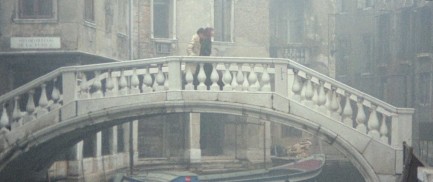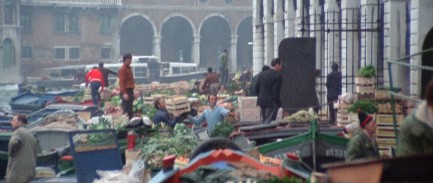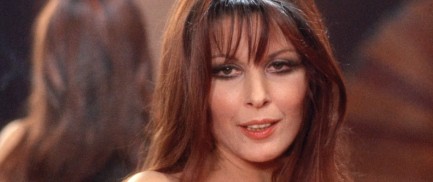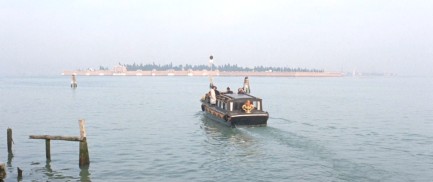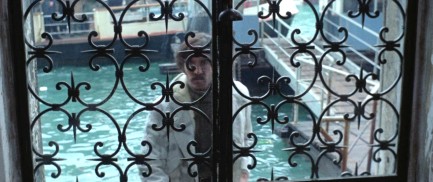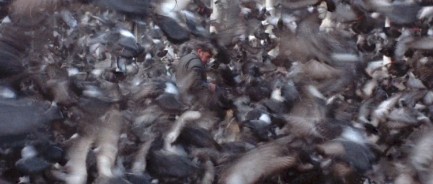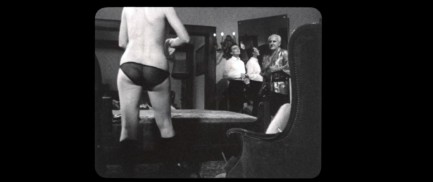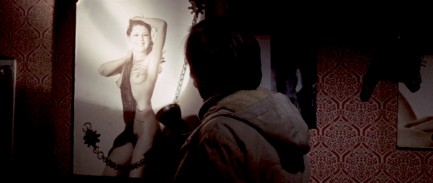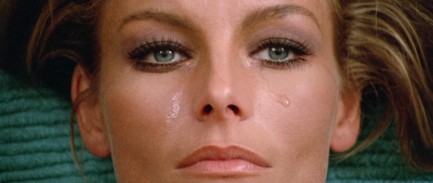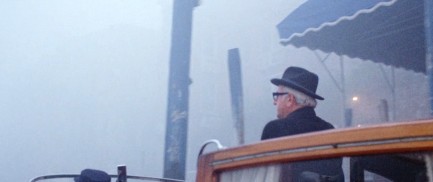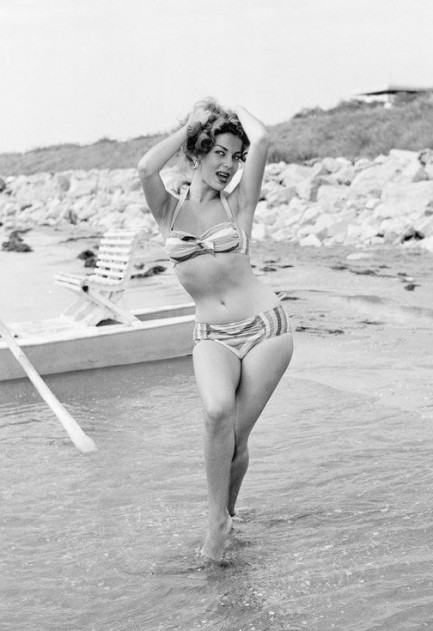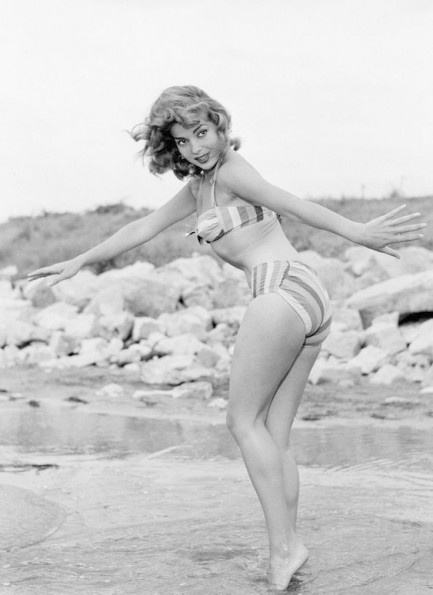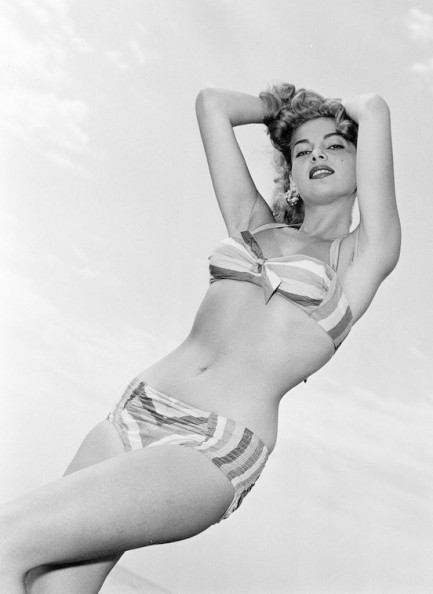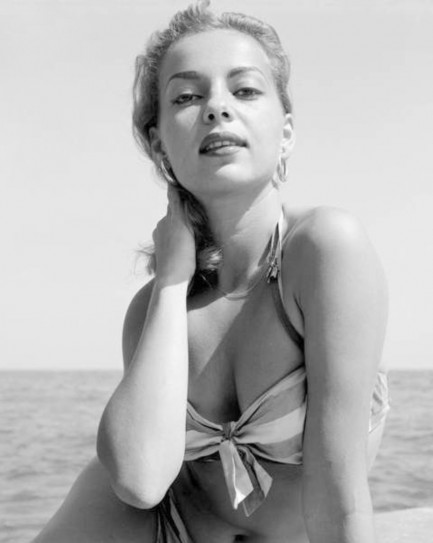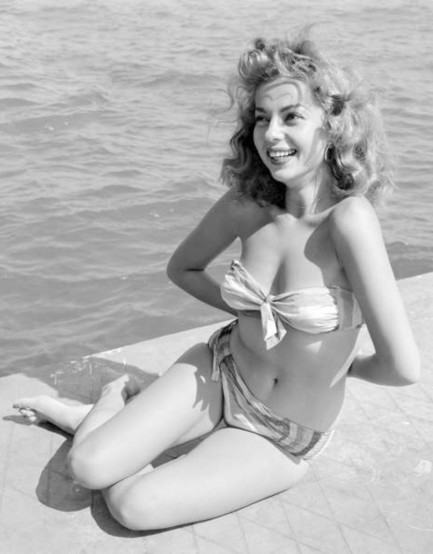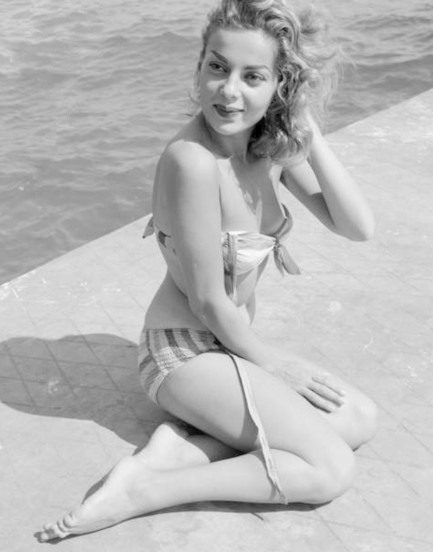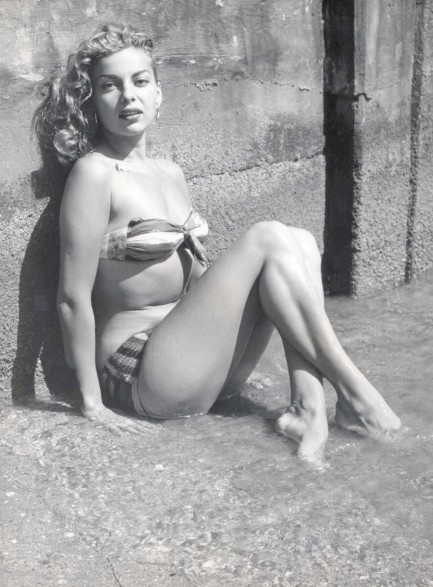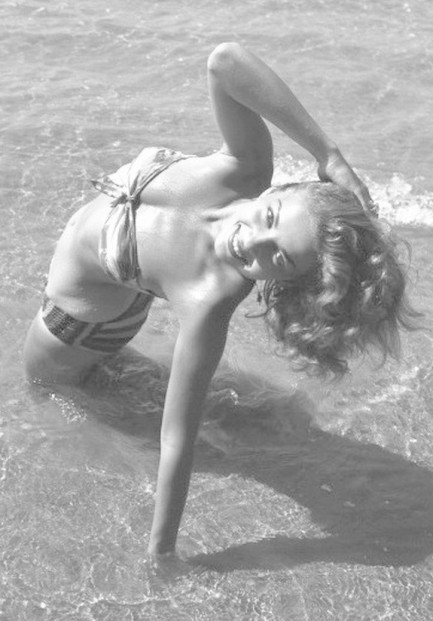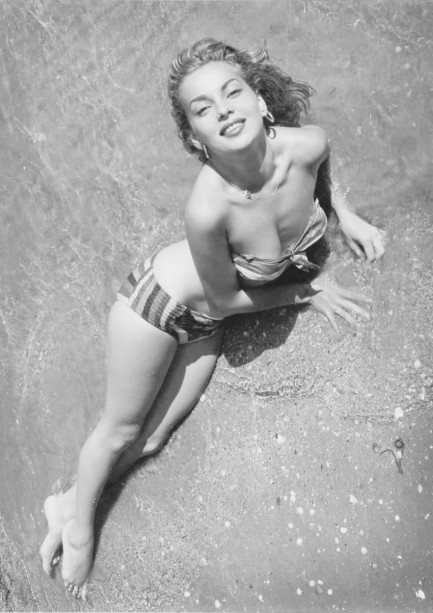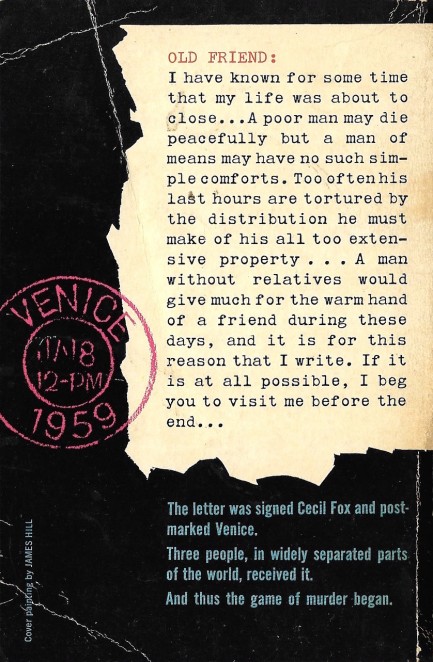 Who'd want to kill a child? On occasion, virtually any parent on the planet, but in this case it's a violent psychopath. 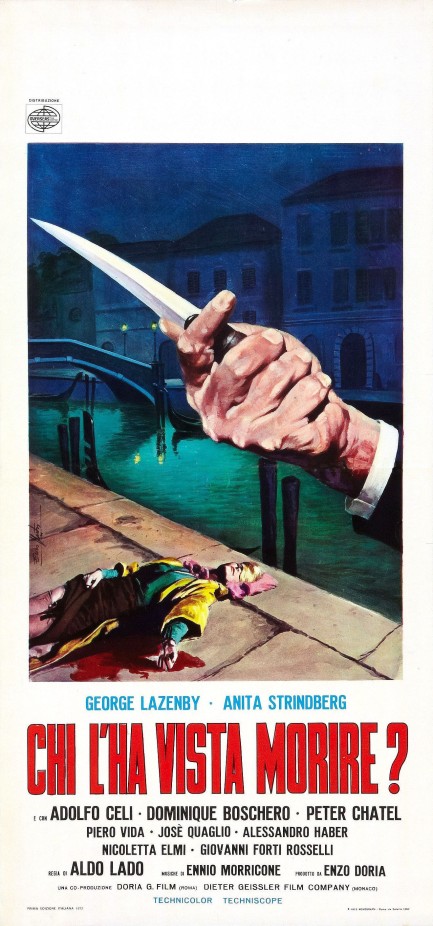
This poster was painted by the great Enzo Nistri (the brush behind classic promos such as this and this) for the giallo flick Chi l'ha vista morire?, known in English as Who Saw Her Die? It stars former James Bond lead George Lazenby (looking unhealthily thin here because for reasons inexplicable he lost thirty-five pounds for the role) as an American artist in Venice whose young daughter goes missing. He first appeals to the (pro forma ineffectual) police, but the girl turns up floating dead in the Grand Canal.
This brings Lazenby's estranged wife Anita Strindberg to town for the funeral, and soon they're asking questions about a child murder from the previous year, which we the viewers have seen in the opening reel being committed by a woman clad and veiled in black. Lazenby and Strindberg go full sleuth in order to identify and locate this suspected killer, who meanwhile graduates to knocking off adults who might have clues. You may assume co-star and former Bond villain Adolfo Celi has something to do with all this, and he might, but this is a giallo. There's no way to know who's the killer until the final reveal.
The movie's real star may be Venice, where residents once sauntered easily through lanes uncluttered by tour groups and AirBnB renters. You'll see many hidden nooks of the city, beautifully shot by director Aldo Lado and cinematographer Franco Di Giacomo. This type of scenery will come courtesy of AI image generators in the approaching years. After all, why close down St. Mark's Square when you can render it in a computer? Take heart, though—even a computer will never be able to generate Anita Strindberg. Chi l'ha vista morire? premiered in Italy today in 1972.
 Cold War spies make waves in the City of Canals. 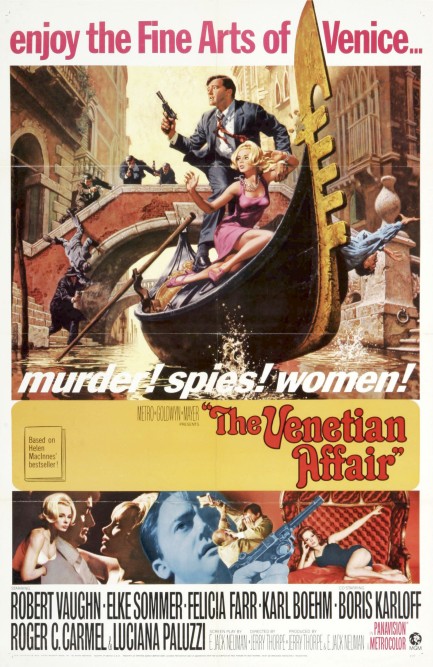
The Venetian Affair, which premiered today in 1966, has a rather interesting promo poster. It was painted by U.S. artist Frank McCarthy, who was big in paperback covers early in his career, moved into high-budget movie promos such as James Bond posters, and finally made a mark in realist fine art. We love this piece from him. There's a lot going on. If you check out his effort for You Only Live Twice here you'll see how dense and chaotic his work could be, same as above, where he has people falling off the bridge, off the gondola, and guns being brandished everywhere. In addition, his likenesses of the movie's stars are good. He was a major talent.
The first observation you might make while watching The Venetian Affair is that it would be impossible to make a similar movie in that city today. Nearly four million tourists visited Venice in 2022, making nearly every street—and certainly every site of special historical note—like the mass exodus from a just-completed football game. With that level of humanity about, closing parts of the city or main squares—while maybe possible—would not be practical or economical.
But The Venetian Affair was made back when quiet streets and dark corners existed. Old world architecture always makes for a good spy movie backdrop. That's exactly what you get in this adventure about a mind control drug being used to foment conflict between the U.S. and U.S.S.R. Robert Vaughn stars as a former CIA agent who was fired after he married Elke Sommer, who was suspected of being a double agent. Vaughn never found out whether that was true because he and Sommer were torn apart by turbulent events. But when a bomb blows up a Venice political conference and Sommer is thought to be involved, the CIA drags Vaughn back into its clutches to find Sommer, as well as the crucial clue that might explain the bombing.
Vaughn is a cool and composed actor, any movie with Sommer is one we'll watch, and co-stars Felicia Farr, Luciana Paluzzi, Ed Asner, and the venerable Boris Karloff are all enticements, but we can't say The Venetian Affair is a scintillating example of a Cold War spy flick. It's such a fertile sub-genre, one that produced some of the best movies of 1950s through 1970s. Even against the beautiful Venice backdrop it mostly falls flat due to a screenplay that never hits any highs. But that doesn't mean you shouldn't watch it. Though it lacks highs, it also lack any serious lows. You can spend your time worse ways. Plus—Sommer. What more do you need?
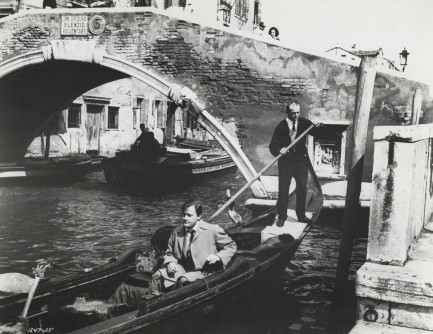 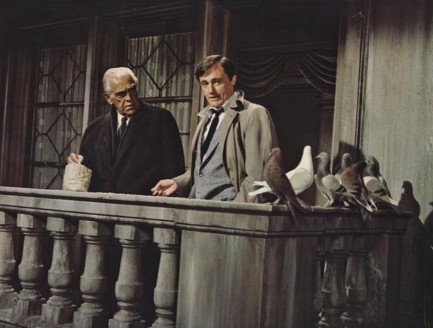 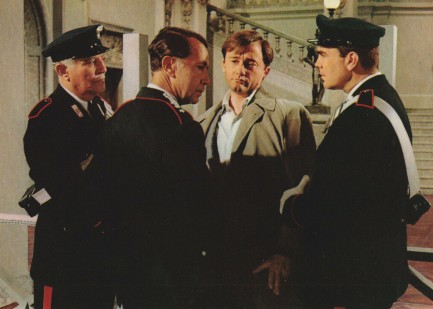 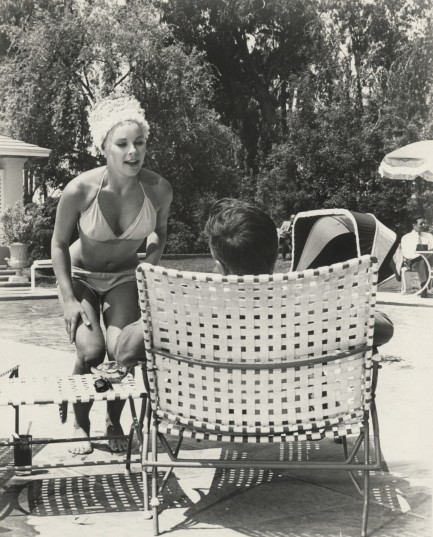 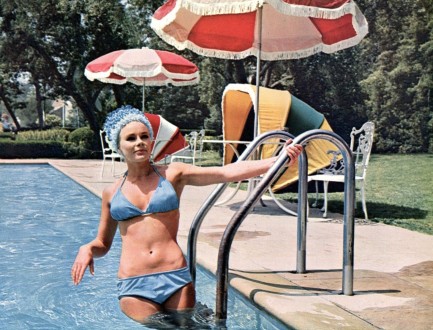 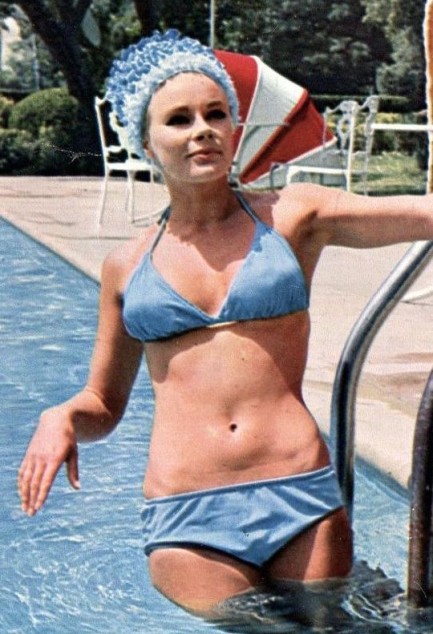 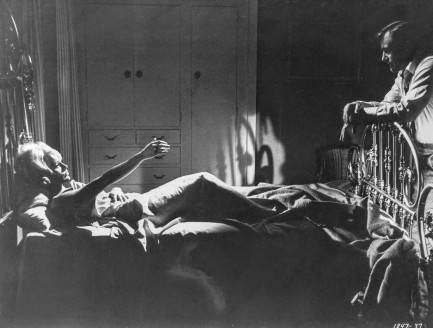 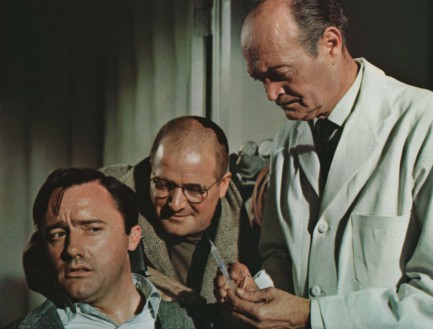 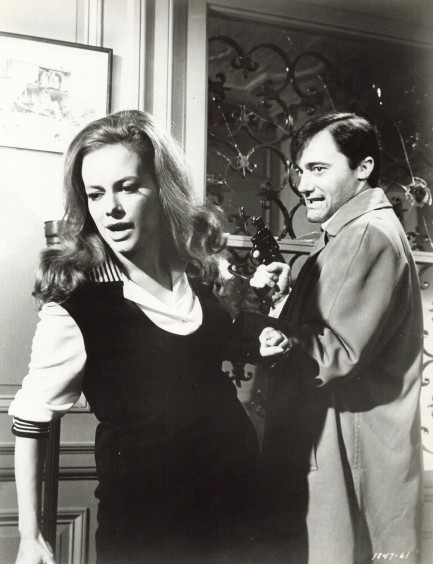 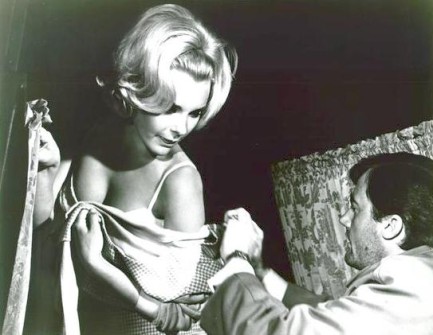 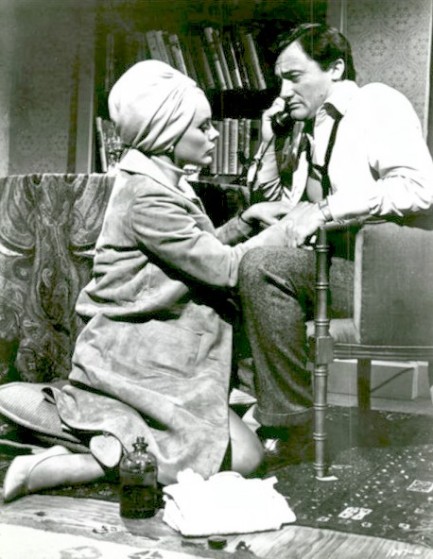 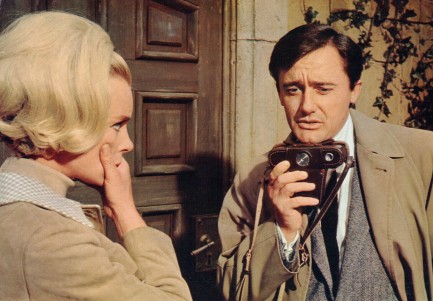 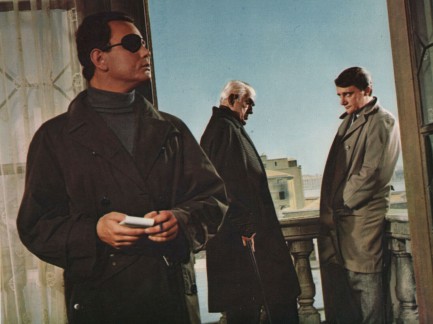 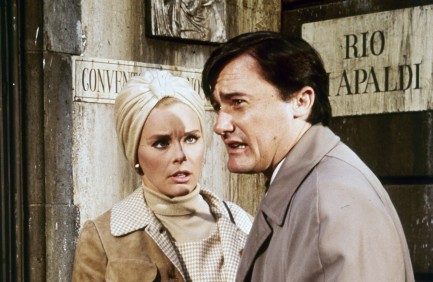 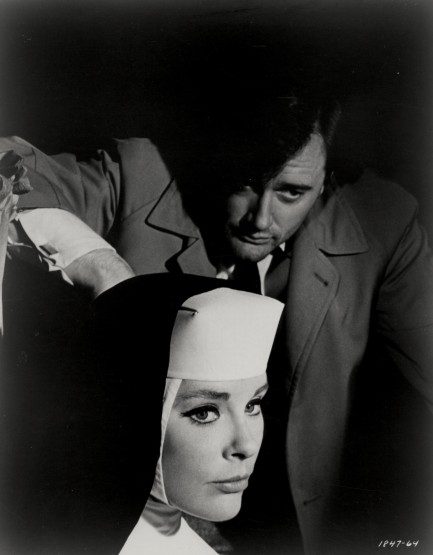 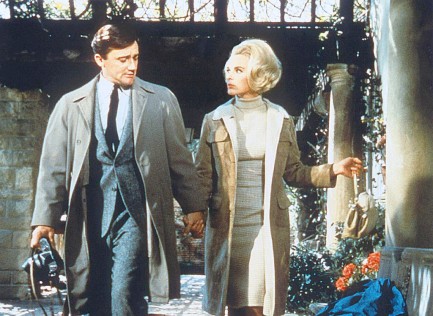 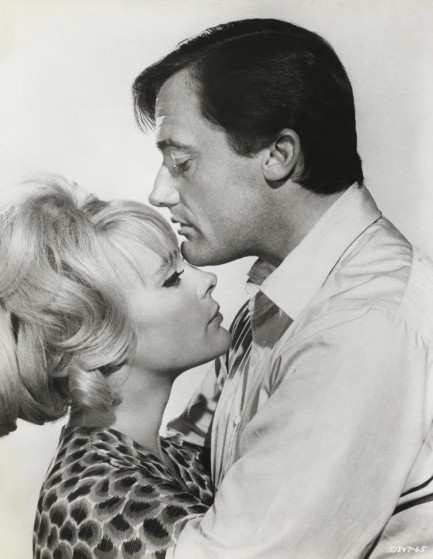 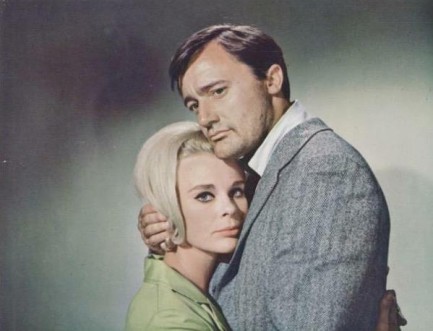 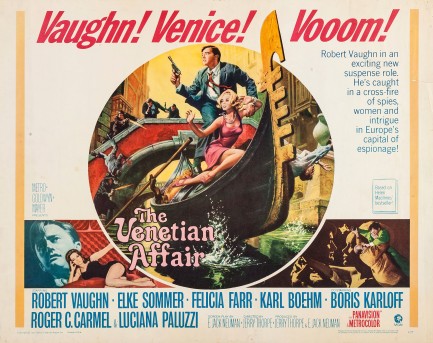 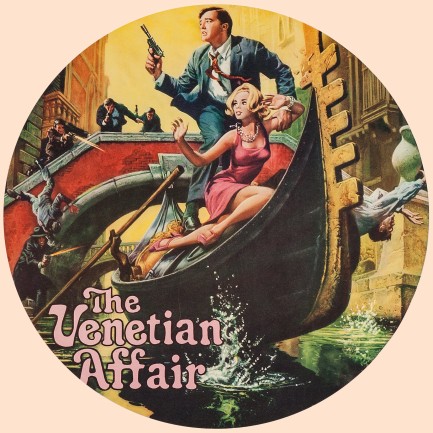
 Fangs for your service. 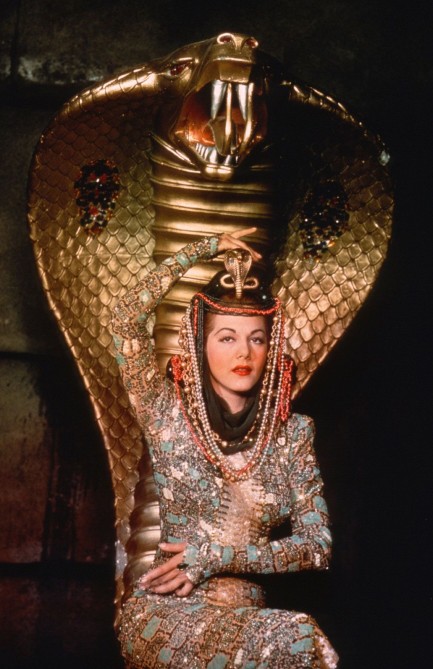
This promo image of Dominican actress Maria Montez in costume for her starring role in 1944's The Cobra Woman sells the movie for us. We'll definitely watch it—and hope it's better than the similarly named 1972 b-horror flick Night of the Cobra Woman. For that matter, we hope it's better than 1955's Cult of the Cobra. Our fingers are crossed. Montez was one of the top actresses in exotic escapist films, appearing in such fare as Ali Baba and the Forty Thieves, South of Tahiti, Moonlight in Hawaii, Sudan, Tangier, White Savage, Pirates of Monterrey, The Thief of Venice... you get the idea. She was still at the top of her globetrotting game when she was found dead in her bathtub in 1951 at age thirty-nine, but her legacy as a film star is assured—even if her movies were shot on Hollywood sound stages, she helped audiences travel the world.
 I don't care if his schedule is packed today. I found him and I'm keeping him. 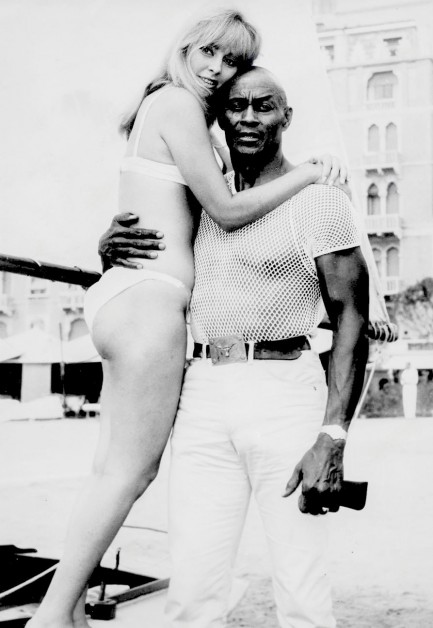
This nice image shows U.S. actor Woody Strode and Italian actress Vittoria Solinas posing together at the Lido in Venice, Italy, in 1967, probably during the Venice Film Festival. Solinas acted in only five films, but was a popular magazine model, and later became a singer and author. Strode is somewhat forgotten today, but was a prolific actor who appeared in more than sixty films, most in small roles, though many were noticeable, such as when he played the gladiator Draba who fought Kirk Douglas in Spartacus. Strode's calling card—as if you couldn't guess—was a body he'd honed as a college athlete and professional wrestler. Think of him as the original Rock, with the main difference being that his neck was smaller than his head. Other movies of his include Genghis Khan, Black Jesus, The Man Who Shot Liberty Valance, and Colpo en canna, aka Loaded Guns. We hope he and Solinas had a lovely afternoon.
 Okay, my dear. Let's get you back indoors. You've provided Italy more than enough spank bank material for one day. 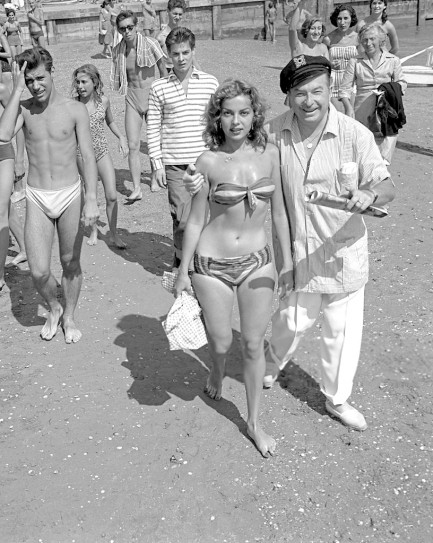
We recently showed you Abbe Lane on one of her album covers, but we've brought her back today because of this fun photo and the ones below. Lane was once deemed by Italian television authorities to be too sexy for broadcast. That's right—in Italy. So you can imagine the excitement when she donned this striped bikini for a photo shoot on the Lido in Venice, Italy during the summer of 1956. The proprietary arm belongs to her husband, Spanish bandleader Xavier Gugat. We think of the couple as the Beyoncé and Jay Z of their era, which is to say, Lane is waaaay too pretty for Cugat. She was also thirty-one years younger than him, which just goes to show what talent can do for a man: Xavier: You have inspired me, baby. I will write a song about you.
Abbe: You've already written me dozens, Xavier. All that cha-cha stuff is getting a little old.
Xavier: Music is just one of my abilities, cariño. Did I ever make you my authentic paella Valenciana with garrofó and rabbit? I almost became a chef, you know, but music beckoned.
Abbe: Men have cooked for me before. Yves Montand once made me a chocolate and pear soufflé. It was an exquisite grace note in a magnificently composed dinner, and that wasn't even really the dessert.
Xavier: Yes, that Yves. How urbane of him. How about I give you a purifying seaweed mask and a pedicure? I am a bit of an amateur aesthetician, and I love your feet.
Abbe: My skin—in case you haven't noticed—is perfect. Several men told me that today, and a cabana boy named Guido gave me a foot rub. You were snorkeling at the time.
Xavier: Grrr... I see. Well, I could paint your portrait. I am quite a good artist. I spent some time studying egg tempera at the Reial Acadèmia Catalana.
Abbe: I could never sit still that long again. Marcello Mastroianni painting me nude last year was quite enough. Day after day, hour after hour in that... well, frankly provocative pose he wanted. You were on tour, but I knew you wouldn't mind.
Xavier: Is that so? Well, fine, but I was at his house just a month ago. Why did he not show me this painting?
Abbe: I don't know. It's hanging right in his bedroom. So he tells me.
Xavier: *sigh* No meal, no skin care, no song. I guess I am just an old man unable to impress you any longer. When we get back to the villa I will simply take out the garbage, then finish reading that book I was—
Abbe: Take out the garbage? Oh, sweetheart. Tell you what—you do that and I'll put on the g-string and thigh-high boots you like and meet you in the bedroom.
The lesson from that day in Venice is that, for a wife, the ultimate turn-on is a husband who's willing to do chores. Cugat spent eleven years with Lane before they finally divorced in June 1964. She was married again before the year was over, which was a pretty fast rebound and remarriage even for Hollywood. Meanwhile, a few years later Cugat married Spanish singer and dancer Charo, who was his junior by fifty-one or forty-one years, depending on who you believe. Either way, music, cooking, and even chores are all fine, but maybe Cugat's real talent was for bedazzling younger women.
 So just out of curiosity, why aren't you paddling an Uber? Seems like everyone else is. 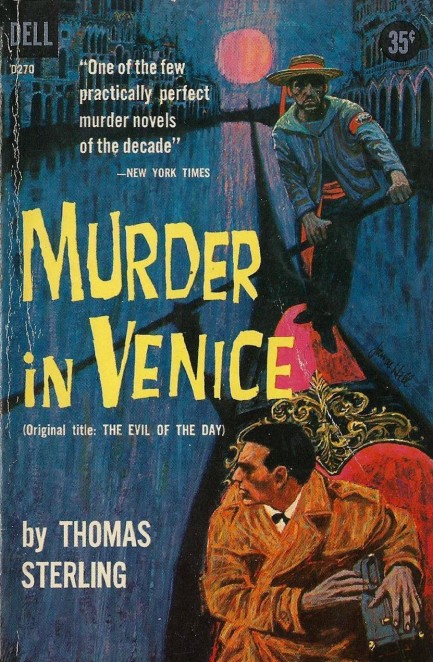
This spectacular cover for Thomas Sterling's Murder in Venice was painted by James Hill, an artist of obvious skill but one we rarely encounter. The book was originally published in 1955 as The Evil of the Day, with this beautiful Dell edition coming in 1959. Sterling tells the tale of a man named Cecil Fox who invites three guests from abroad to his Venetian mansion in order to pretend he's near death and tease them with the promise of inheriting his wealth. These three guests are people he's not had much contact with in recent years, which makes the game even more delicious for him, the way the trio feel plucked from their lives of obscurity to possibly be gifted wealth and status. Factions form and subterfuges abound, but everything is thrown into disarray when one of the guests is murdered. Was it to eliminate a possible inheritor? To add intrigue to the game? Or for other, unguessable reasons?
Go with option three. The whole point of murder mysteries is to be unguessable. Murder in Venice is a pretty good puzzler, with a small set of curious characters and a few forays into the Venetian night. Sterling gets inside the head of his protagonist Celia Johns quite effectively. She's the personal assistant to one of the invitees, and thus has no skin in the game. She just wants a fair wage for a fair day's work. At least that what she says. Her host Mr. Fox, on the other hand, seems to think everyone is corruptible, and everyone is money hungry—it's just a matter of baiting the hook in the right way. He thinks he knows most people better than they know themselves, and he doesn't see Celia as any sort of exception.
While Murder in Venice is a mystery, it's also a minor sociological examination of what it means to some people to be rich but face losing their money, and what it means to others to not value money at all. Sterling scored a success, but interestingly, he borrowed the idea from Ben Johnson's play Volpone, which premiered way back in 1606. Sterling was up front about his inspiration, and within his novel the play even makes an appearance on a drawing room shelf. Frederick Knott, who wrote the famed plays Wait Until Dark and Dial M for Murder, later adapted Sterling's novel into a 1959 play called Mr. Fox of Venice. The next year the book was published in France as Le Tricheur de Venise and won Sterling the Grand Prix de Littérature Policière for foreign authors. And finally, Joseph Mankiewicz combined the original play, Sterling's novel, and Knott's play into a 1967 movie called The Honey Pot.
When material gets recycled to that extent, it's usually good, and Sterling does his part. He was a diplomat before becoming an author and lived in Italy for years, so we would have liked more color from someone who obviously knew Venice well, but he's an interesting writer even without the aid of scenery, as in this moment of musing from Celia: She said, “my sleep,” as though it were, “my dress,” or, “my ring.” It belonged to her. Every night had a certain amount, and if she lost it she was frantic. She had forgotten that sleep was not a thing, it was a country. You couldn't get it, you had to go there. And it was never lost. Sometimes you missed a train, but there was always another coming after. In the meantime, neither the green hills nor the nightmare forests ever changed. They stayed where they were and you went to them. And sooner or later you would go and not come back.
 Gemser exercises her right to bare arms—and everything else too. 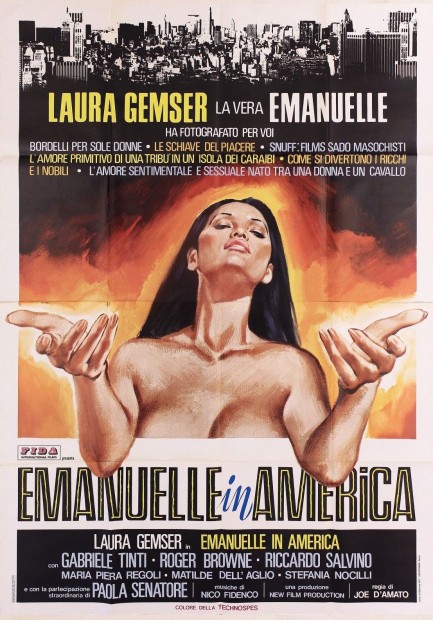
We try to document the top erotic stars of yesteryear—Lindberg, Forså, Annie Belle, Izumi Shima. Today it's Laura Gemser's turn again, this time starring in Emanuelle in America, which premiered in Italy today in 1977. This entry is third, fourth, or seventh in her Emanuelle series, depending on how you count them, and sees her investigating a multi-national sex trafficking ring that kidnaps women and kills them for the production of underground snuff films. That synopsis and the fact that the movie is helmed by Joe D'Amato are all you need to hear to suspect this is going all sorts of disturbing places, and indeed, your worst fears will be realized, as scenes of documentary-style transgressive violence occur, and there's a scene of a woman stroking off a horse. Fortunately, the snuff sequences are fake. They were staged by Italian special effects experts Giannetto de Rossi and Maurizio Trani. The horse thing? That's real.
*heavy sigh*
Okay, so let's forget those problems for now. What's the thrust of the movie? It's a scathing indictment of the decadent wealthy, people who money has deadened inside and who must buy increasingly depraved thrills to bring stimulation to their lives. During the course of Gemser's investigation she goes undercover as a high priced call girl, jets from the U.S. to Venice to the Caribbean and back to the States, gets naked or topless numerous times, and has her skinny body handled and squeezed by man and woman alike, including her real-life husband Gabriele Tinti. As usual her sexual powers are transformative. For instance a carjacker wants to kill her but has never experienced sex and has his lid flipped by his first blowjob. Later a call girl with no self worth comes to see the world in a brighter light after a slippery steam room session with Gemser. She's like a superhero—with a superpower you really have to marvel at.
We won't tell you how the whole snuff plotline resolves. You'll just have to watch—all the way to the baffling postscript. Should you decide to partake, you'll probably end up with a version of the movie that has hardcore sequences featuring porn actresses Paola Senatore and Marina Lotar inserted, so to speak. Usually such scenes shred continuity, and they do here too, as well as failing to add much to the overall erotic value of the film. We'll admit though, that the bit where a woman sticks daisies in a man's nest of pubes then says, “Your bush is in flower,” was funny. The other high point is Gemser, hitting her stride here as the Emanuelle character, looking her best, making stick-thin more alluring than she has any right to. She does the same in many additional entries. A few of those efforts are better, but many are far worse, so we'll have to call Emanuelle in America above average. 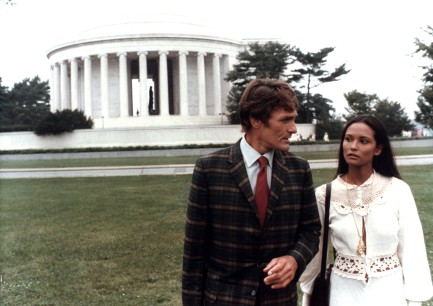 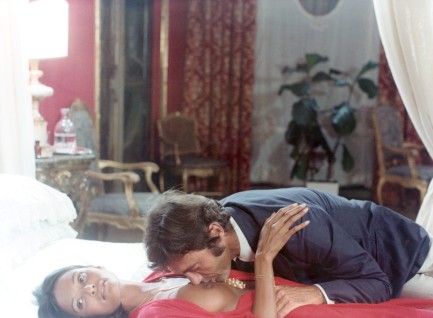 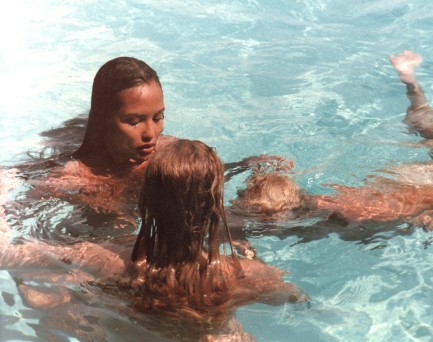 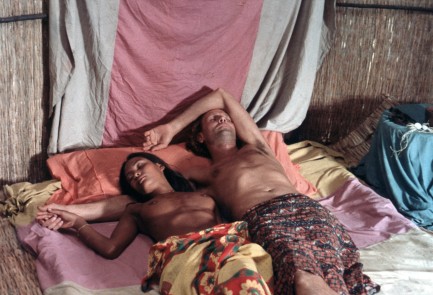 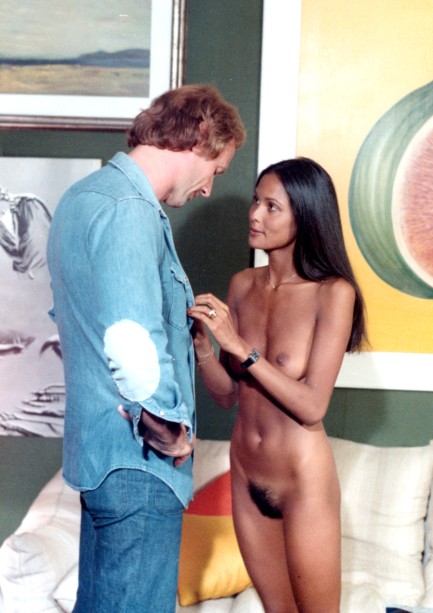 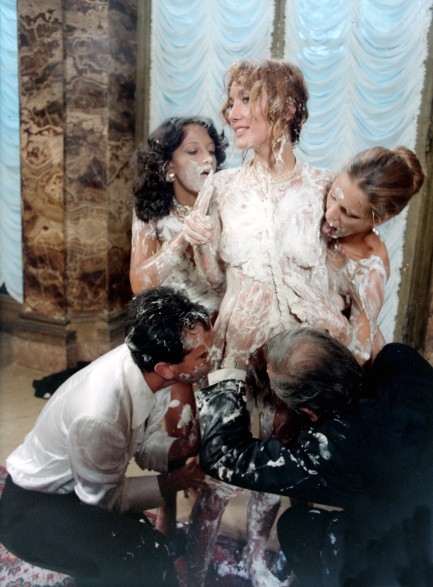 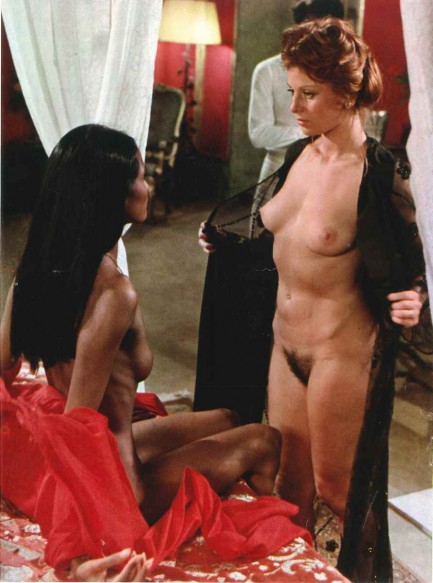 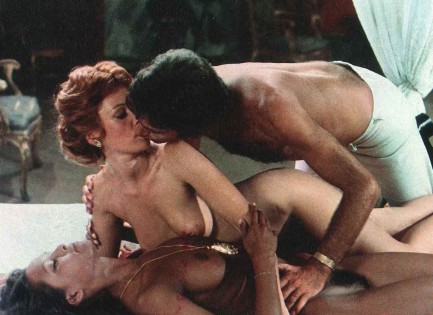 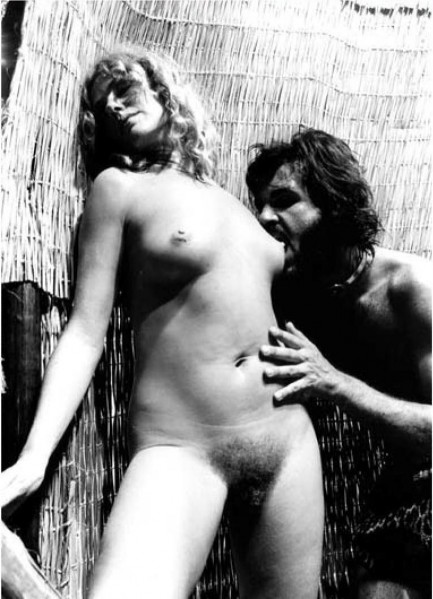 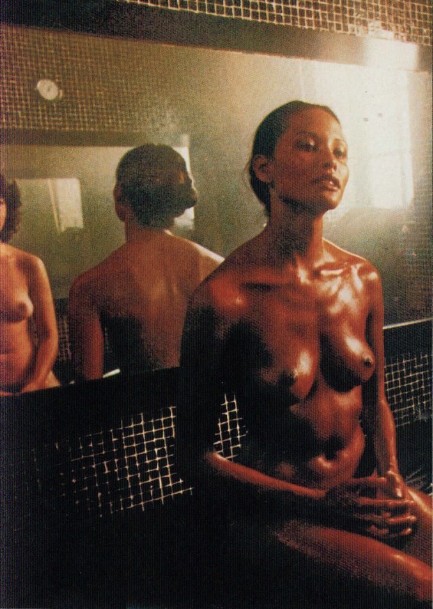 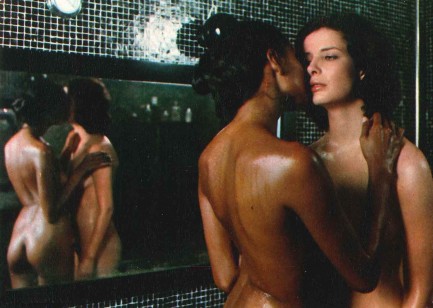 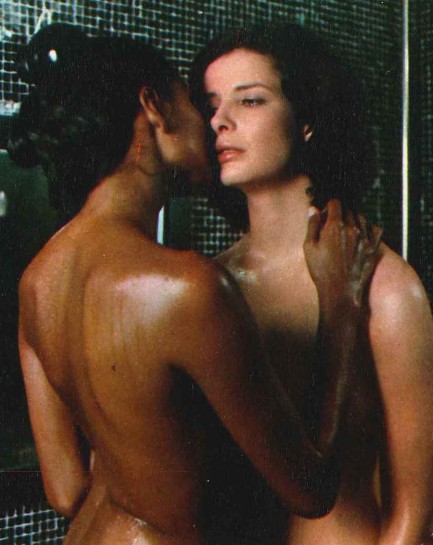 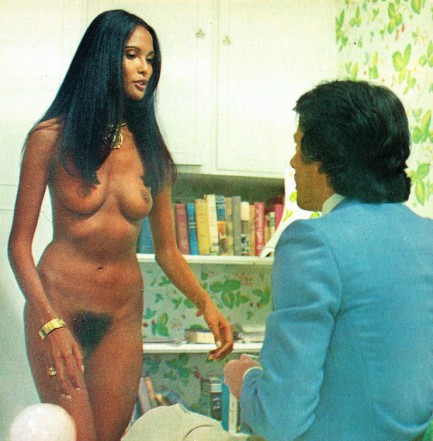 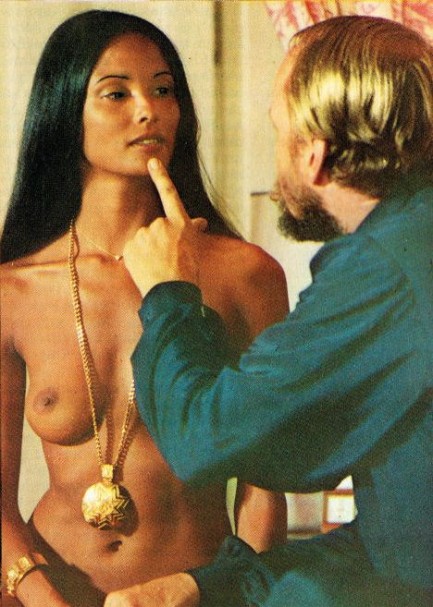 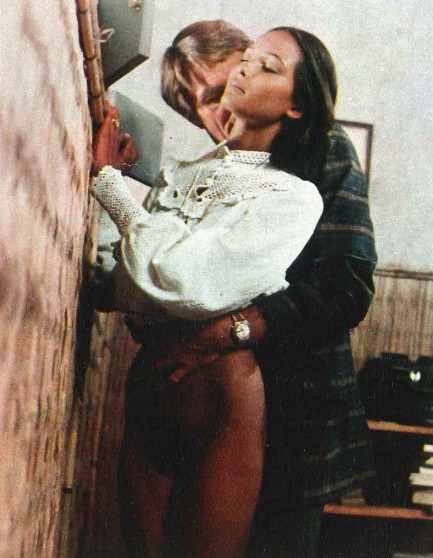 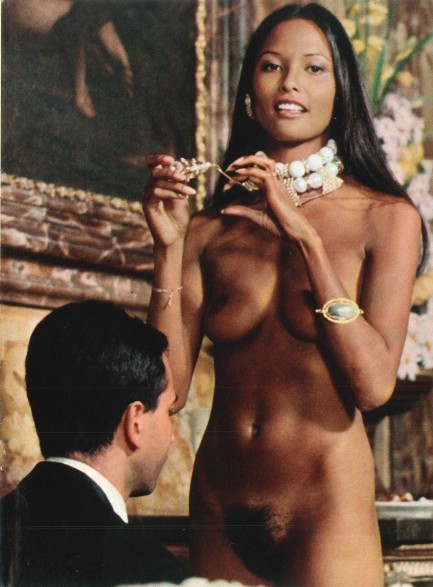 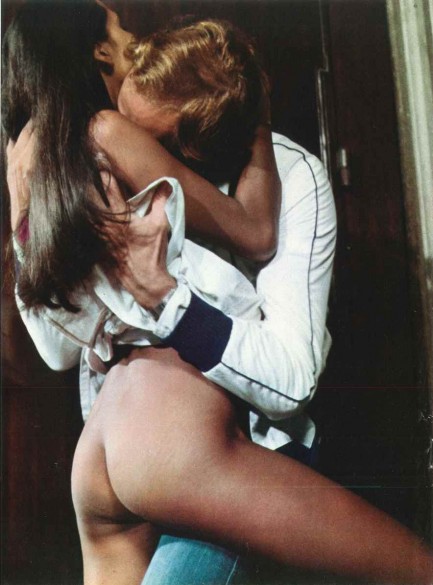   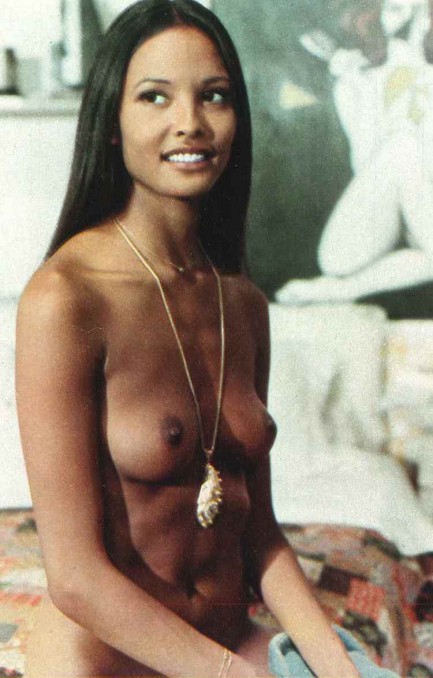
 Usually they're pretty bold but these are impossible to find. 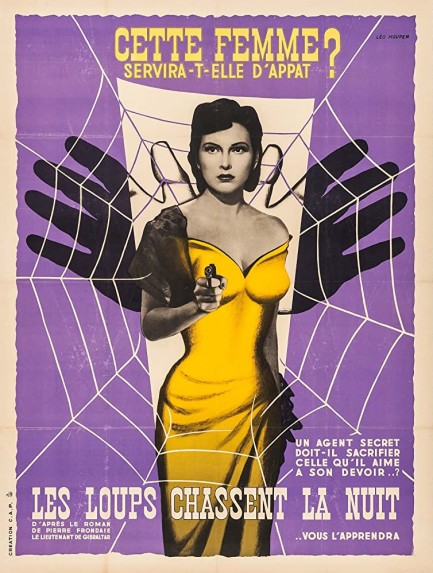
It's rare for us to be unable to find a U.S. or European movie, but it happens. We didn't let it stop us from sharing this amazing poster, though, which was made for the French thriller La loups chassent la nuits, known in English as Wolves Hunt at Night. It's a spy flick set in Trieste and Venice, and stars Jean-Pierre Aumont and Italian actress Carla del Poggio. The poster was designed by Léo Houper using a photo of del Poggio as its central element. We'll keep looking for this film and maybe one day we'll get lucky. It premiered in France today in 1952.
 If you're going to have a fantasy make it a doozy. 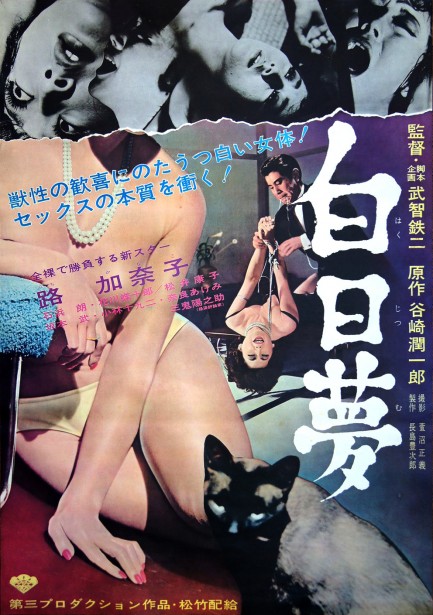 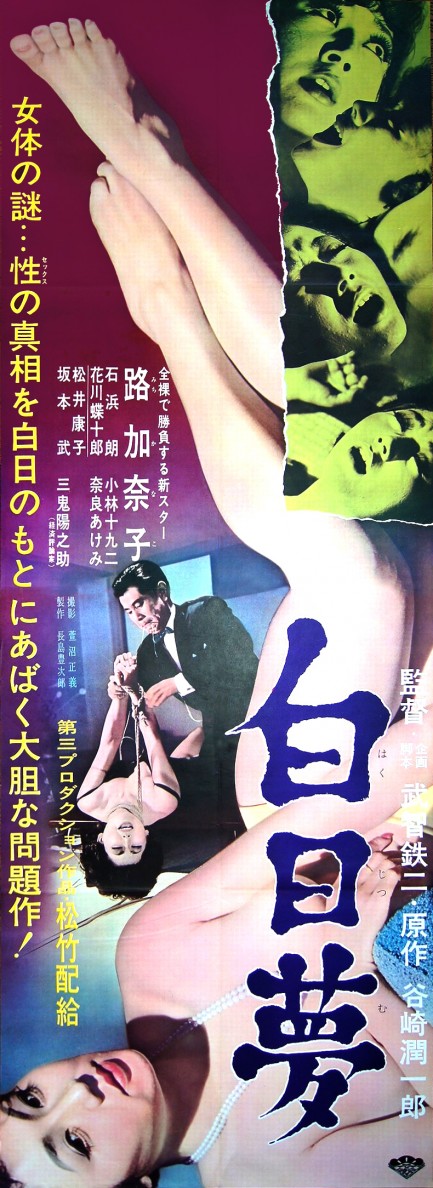
We have two exceptionally beautiful Japanese posters today. These were made for Hakujitsumu, known in English as Daydream. That's an unusually concise Japanese title, but this won't be a concise post. The movie is loosely based on a 1926 novel by Junichir Tanizaki, and was one of the first films classified as pinku eiga, as well as one of the first erotic productions to have a big budget and a run in mainstream cinemas. It also played outside Japan, with a screening at the 1964 Venice Festival and a release in Stateside cinemas. And because of its success, director Tetsuji Takechi remade the film in hardcore style, not once, but twice, in 1981 and 1987, both times starring Kyōko Aizome, who we've talked about before.
The premise of this is fascinating. Akira Ishihama meets Kanako Michi in their dentist's waiting room. Later, as both of them are receiving anesthesia, Ishihama looks over and sees—because apparently Japanese dentistry meant placing two patients into the same room—the dentist and a nurse strip Michi, then seemingly suck her blood like vampires. Was it an anesthetic dream, or a real occurrence? Ishihama needs to uncover the truth. He goes to a nightclub where Michi sings, sees the dentist approach her and demand that she leave with him. Ishihama follows—or actually sort of teleports after them—and later sees Michi submit to various forms of kinky bondage. But is any of what he's seeing real? The title of the film gives that away, doesn't it?
We wonder if Hakujitsumu used the plot device of fantasy because it softened the idea of the bondage and weirdness Michi goes through. Well, all that would soon become routine in Japanese cinema. In addition this was the first Japanese film to show an actress fully naked—which happens for extended periods. Most write-ups say there's even pubic hair shown, but we'll admit we blinked and missed it if that was the case. What we didn't miss was what a clear precursor to the pinku genre of roman porno Hakujitsumu is. Here those elements seem novel; by the 1970s, they wouldn't be, and as a result filmmakers were by then pushing the envelope with violence, water sports, and enemas. That envelope could have stayed flat, as far as we're concerned. Hakujitsumu premiered in Japan today in 1964. 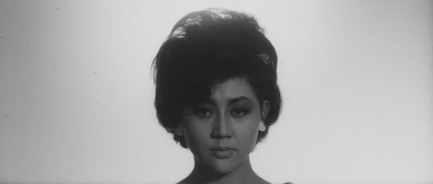 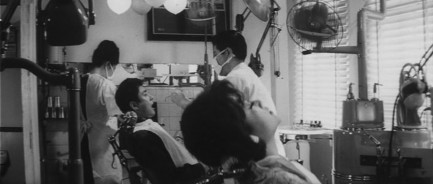 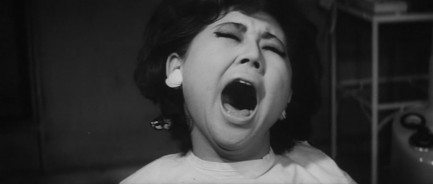 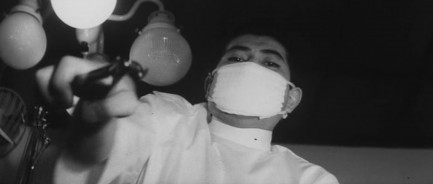 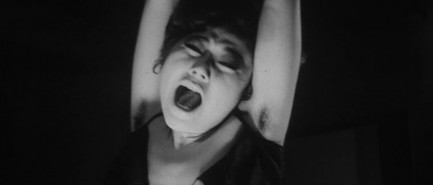 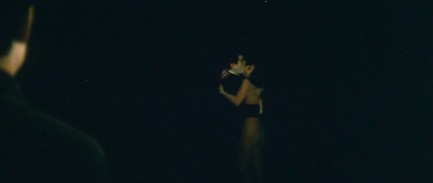 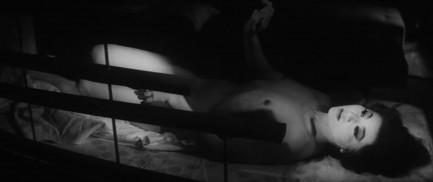 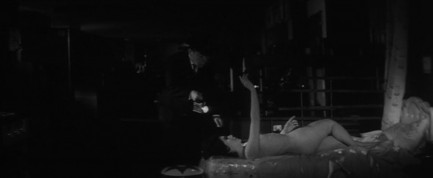 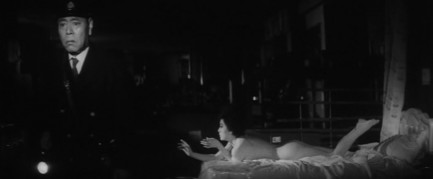 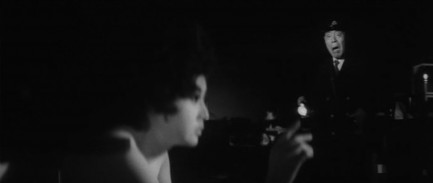 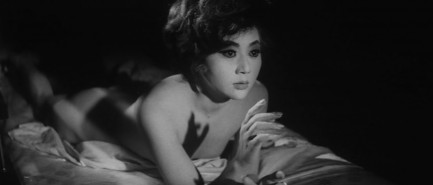 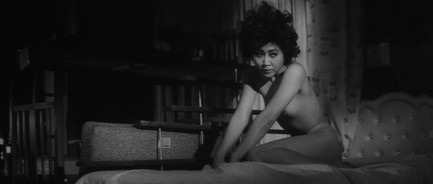 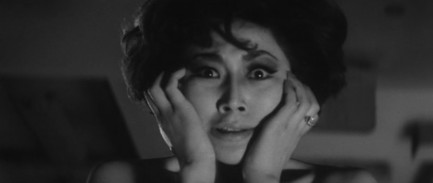
 Big screen Thief gets the job done but isn't quite the perfect crime. 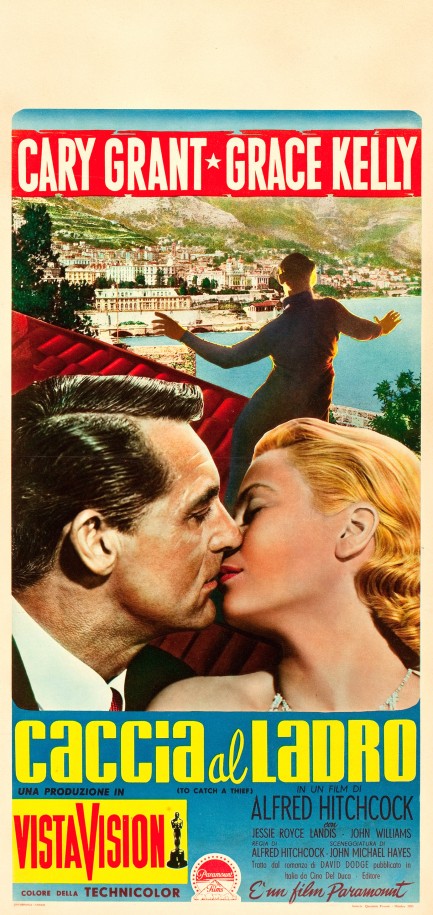
This is a spectacular Italian poster for Caccia al ladro, aka To Catch a Thief, with Cary Grant and Grace Kelly. The moviemakers opted for a photo-illustration rather than a painting, and it befits the star power of the movie. It was based on David Dodge's best seller of the same name, and in truth it's a pretty simple-minded adaptation of the book. You can just hear the studio execs saying: “We know it's in the novel, but we can't have the star in disguise half the movie, we can't have the romance go unacknowledged until the final reel, and we for damn sure can't have the secondary female lead be more beautiful than Grace Kelly.” Movies are a different medium than books, and changes always happen, but it's just interesting to observe what those changes are. The main change is this: Dodge's novel has suspense, while Hitchcock's adaptation does not. That probably wasn't intentional.
To Catch a Thief is a superstar vehicle, and with Grant and Kelly in the lead roles, and Hitchcock in the director's chair, it's pretty clear the studio considered the hard work done. Extensive French Riviera location shooting and VistaVision widescreen film processing are nice bonuses, but the honchos should have had screenwriter John Michael Hayes hammer the script out a little smoother. We're not being iconoclasts here. The movie received mixed reviews upon release, with some important critics calling it a failure. That's going too far—it isn't a failure. We don't think Grant, Kelly, and Hitchcock would have been capable of making anything but a good movie at this stage. But considering the source material it could have been a perfect movie. To Catch a Thief premiered in the U.S in early August 1955, and in Italy at the Venice Film Festival today the same year. 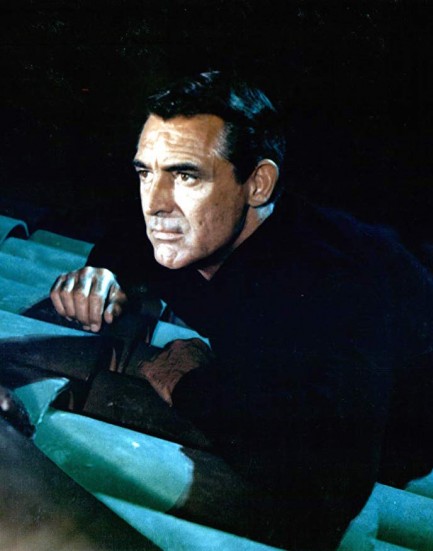 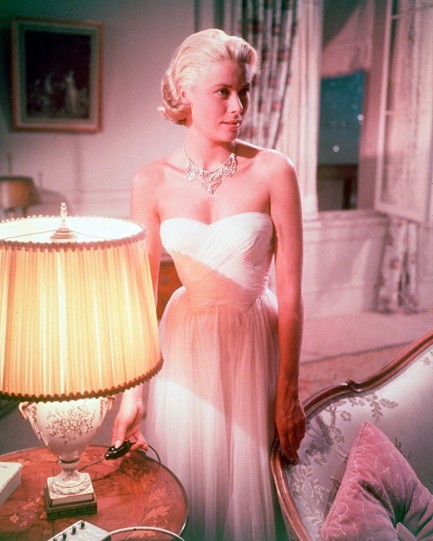 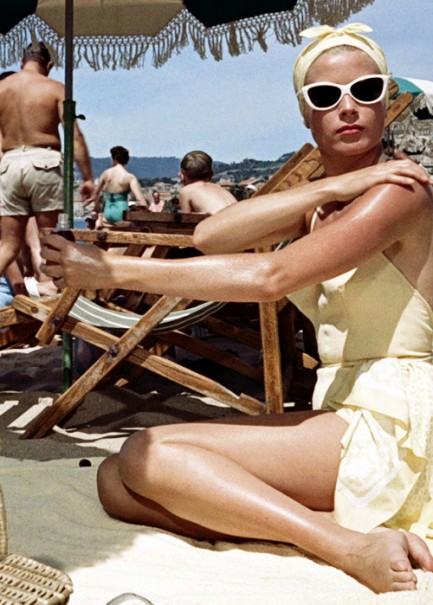 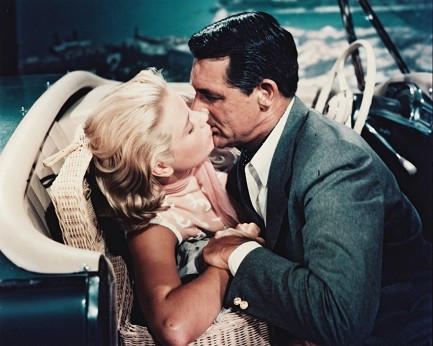 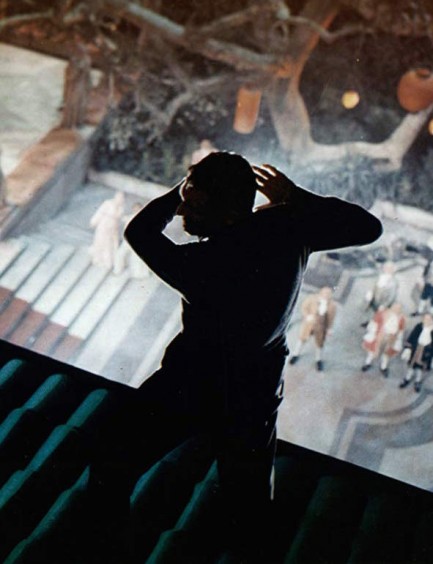 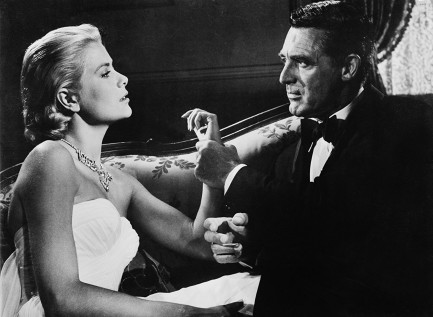 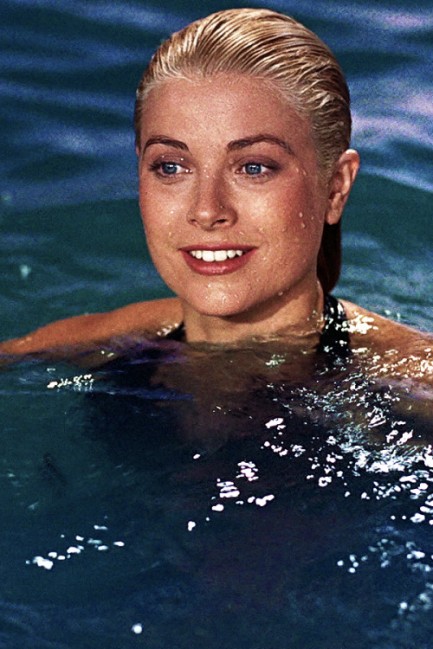 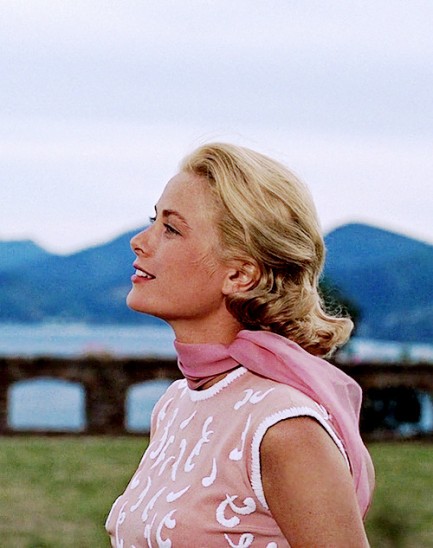 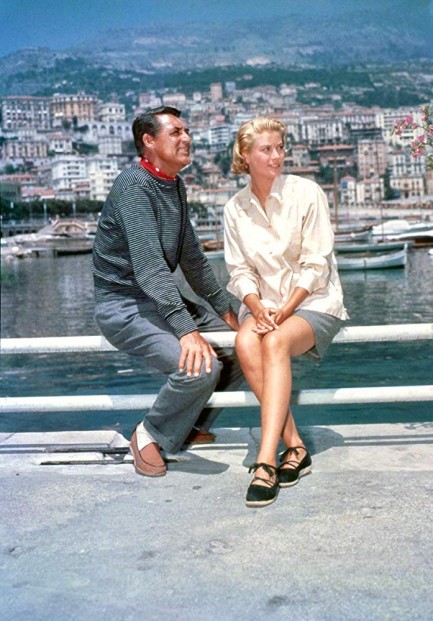 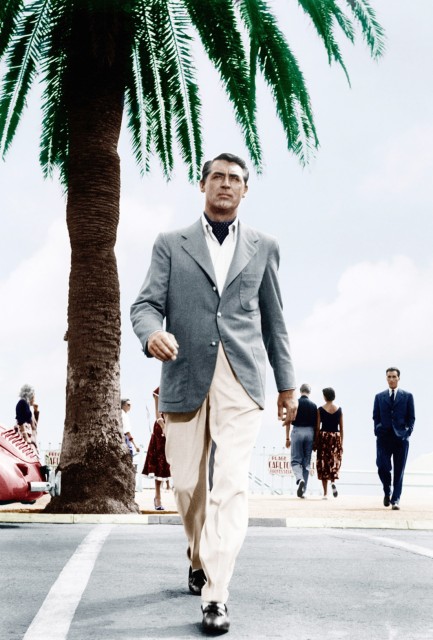

|
 |

The headlines that mattered yesteryear.
2003—Hope Dies
Film legend Bob Hope dies of pneumonia two months after celebrating his 100th birthday. 1945—Churchill Given the Sack
In spite of admiring Winston Churchill as a great wartime leader, Britons elect
Clement Attlee the nation's new prime minister in a sweeping victory for the Labour Party over the Conservatives. 1952—Evita Peron Dies
Eva Duarte de Peron, aka Evita, wife of the president of the Argentine Republic, dies from cancer at age 33. Evita had brought the working classes into a position of political power never witnessed before, but was hated by the nation's powerful military class. She is lain to rest in Milan, Italy in a secret grave under a nun's name, but is eventually returned to Argentina for reburial beside her husband in 1974. 1943—Mussolini Calls It Quits
Italian dictator Benito Mussolini steps down as head of the armed forces and the government. It soon becomes clear that Il Duce did not relinquish power voluntarily, but was forced to resign after former Fascist colleagues turned against him. He is later installed by Germany as leader of the Italian Social Republic in the north of the country, but is killed by partisans in 1945.
|

|
|

It's easy. We have an uploader that makes it a snap. Use it to submit your art, text, header, and subhead. Your post can be funny, serious, or anything in between, as long as it's vintage pulp. You'll get a byline and experience the fleeting pride of free authorship. We'll edit your post for typos, but the rest is up to you. Click here to give us your best shot.

|
|


